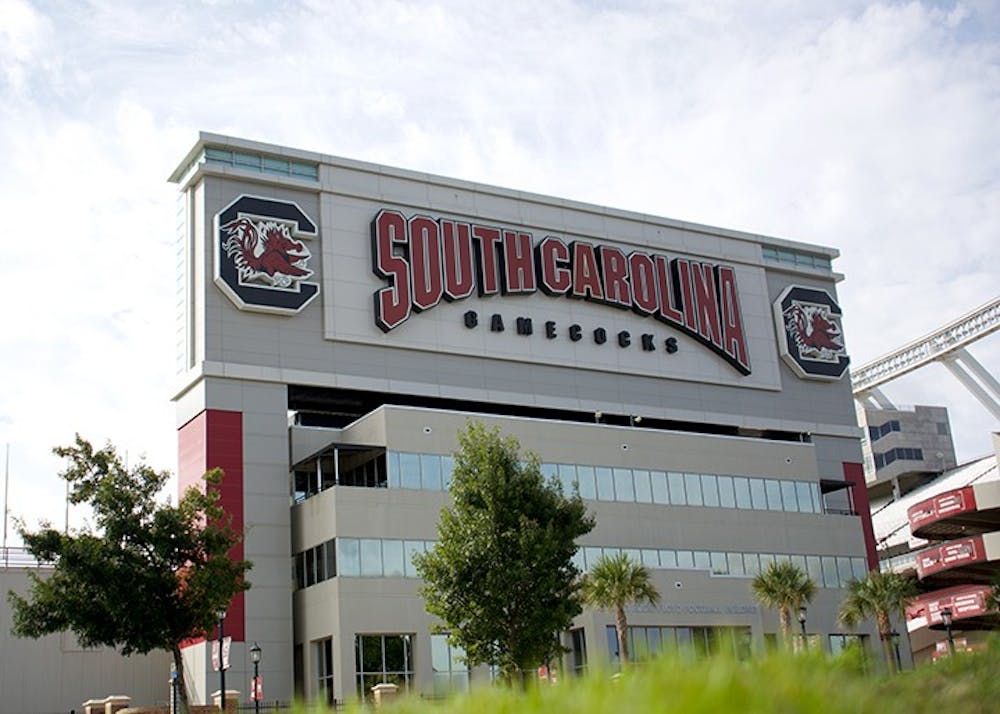It’s often said that in the South, college football is a religion. If that’s the case, then we need a shoulder-pad-wearing Martin Luther — because college football is in an unsustainable position, and there’s no clear way out.
College football is caught inside two different dynamics: One is the cycle of massive ticketing sales, TV contracts and coaching salaries feeding into a sport already saturated with cash, and the other is the cycle of recruiting and exploiting unpaid student-athletes. These two cycles feed each other, and from a certain perspective, they might seem healthy. That's not the case.
Major universities invest an incredible amount of money into college football. For example, in 2018 the University of South Carolina spent more than $33 million on football — still somehow less than the median amount spent by SEC schools.
The NCAA brings in about $8 billion each year, and TV contracts for the 2020 season add up to $1.4 billion. In 28 states, the highest paid state employee is a college football coach. That’s a lot of money for an amateur league, and there’s no sign of the spending slowing down.
In and of itself, universities spending a lot of money on sports might not be an issue. However, a problem arises when only a fraction of this money is actually given back to the players. This comes in the form of scholarships, and in D1 FBS college football, schools are limited to 85 scholarships across the whole team. The value of these scholarships cannot exceed the regular cost of attendance, so at USC, where the out-of-state cost of attendance is $47,613, the maximum the school can spend on football scholarships is about $4 million. That's a lot of money, but not compared to the $140 million of revenue the school brings in from athletics.
Much has been said about how this system essentially exploits players because college football depends on them for the games to be played. This is true, but it’s not the only way the sport depends on players.
One of the reasons college sports are so popular is because they’re seen as authentic and personal — the players are actually from the universities they represent. This is unlike most professional teams, who ultimately answer to some billionaire owner and could move to another state for the next season if they wanted.
In order for this appeal to continue, the players must remain as they are — “amateur” “student”-athletes. If universities started to pay players, the NCAA could eventually just become a semi-pro or minor league sport and shatter any sense of authenticity. If fans want to watch professional football, they’d just watch the NFL, not a minor league team owned by a university.
Of course, the current exploitation of college football players is horrible, and players are starting to realize it. Over the summer, Trevor Lawrence and Justin Fields, the quarterbacks for Clemson and Ohio State, respectively, called for a players' union in response to the COVID-19 pandemic.
COVID is obviously an unprecedented factor, but there’s no reason why this type of player activism could not continue after the pandemic is over.
This new development illustrates just how unstable the current college football system is. If universities stop exploiting players, then they will lose what makes the sport unique, popular and profitable, but if it continues to get more and more exploitative, then it will face other issues, such as possible player revolts and legislative actions.
Really, the only way for the sport to not be in this insupportable position is if it wasn't such a big-money endeavor, but that ship has already sailed. There are intermediate steps that would help alleviate the problem, such as allowing players to profit off their own likeness, but that won’t really unwind the tension that’s been outlined here.
I don’t have a perfect solution, but it’s clear if fans and officials want college football to continue, then they need to realize there is a problem. The NCAA, universities and players need to recognize the issues with their sport and work together to find a solution that prioritizes the players and the university communities the sport is supposed to represent.

